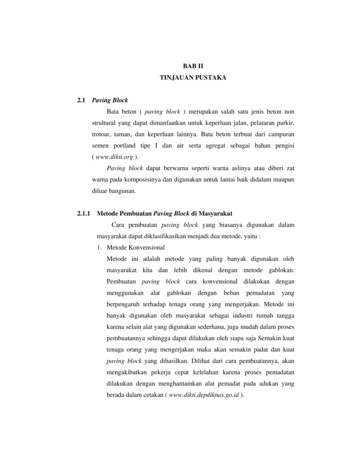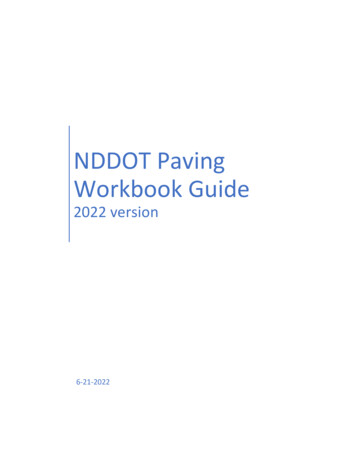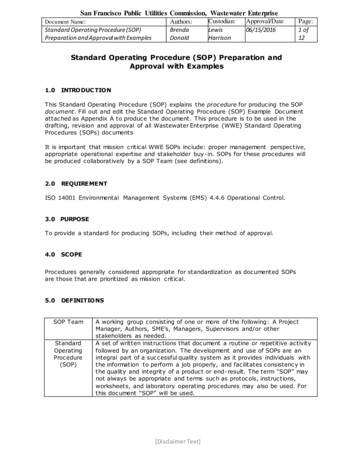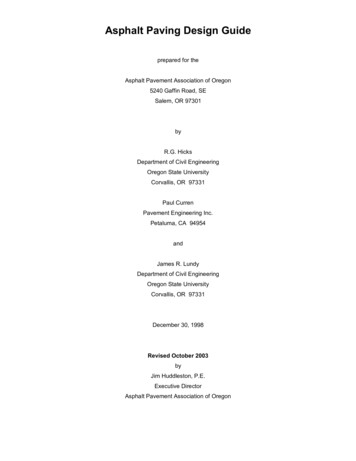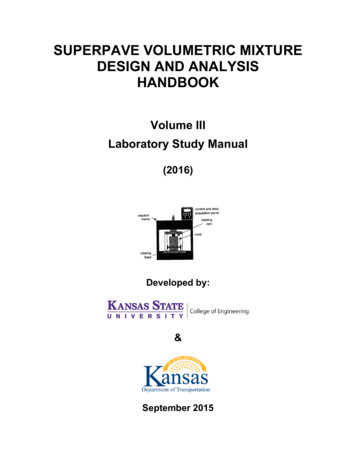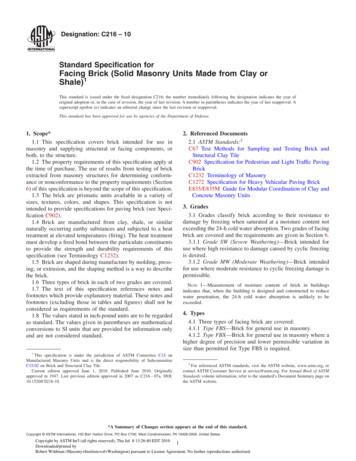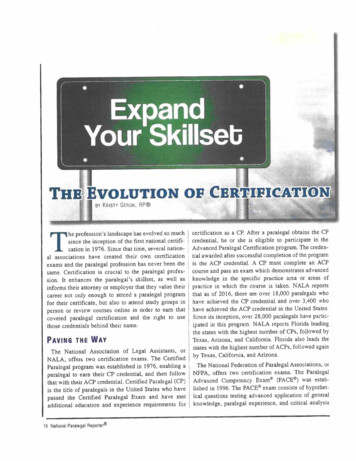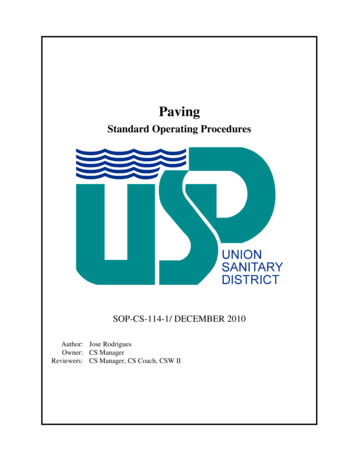
Transcription
This Page Intentionally Left BlankPavingStandard Operating ProceduresSOP-CS-114-1/ DECEMBER 2010Author: Jose RodriguesOwner: CS ManagerReviewers: CS Manager, CS Coach, CSW II
Effective date:December 2010PAVINGThis Page Intentionally Left BlankSeptember 28, 2011 9:38 AM2SOP-CS114-1
Effective date:December 2010PAVINGSOP-CS114-1ADMINISTRATIVEA. Introduction1. This SOP is a set of instructions or steps employees follow to complete a Pavingevolution. It shall be done safely, with no adverse impact on the environment, meetscompliance standards, and in a way that maximizes operational and productionrequirements.B. Cancellation1. Supersedes SOP-CS21523, dated November 2006C. References1. Work Area Traffic Control Handbook (WATCH), APWA, 20092. Best PracticesD. Objectives1. Upon Completion the operator will be aware of the procedures to:a. Conduct pre-job task verificationb. Pick up asphaltc. Paved. Clean job site and restow equipmentE. Equipment/Personnel Required1. 2 Collection Services Worker I/II or Lead CSW2. Hard hat, steel-toe safety shoes, gloves, eye protection, hearing protection3. SSIH Emulsion Oil4. SS1H Oil Emulsion Sprayer5. Tamping Rammer6. Utility Compactor7. Dump truck for spoils & hot asphalt8. Back hoe & trailer9. Asphalt rakes and shovelsF. TerminologySeptember 28, 2011 9:38 AM3
Effective date:December 2010PAVINGSOP-CS114-11. NOTE is used when information is available that can assist the Operator inaccomplishing his or her task. Information is advisory in nature.2. CAUTION is used when special cautions must be taken by the Operator. Failureto following prescribed steps may cause serious bodily injury and damageequipment.3. WARNING is used when special cautions must be taken by the Operator.Failure to follow prescribed steps will cause loss of life or limb and severely damageequipment.G. Employee Responsibility Employees are responsible to follow District policies and procedures for the safeand effective operation of the District equipment.H. Management Responsibility Management is responsible to provide employees adequate education and trainingto safely and effectively operate District equipment.September 28, 2011 9:38 AM4
Effective date:December 2010PAVINGSOP-CS114-1PROCEDURES1.Paving1.1 Pre-Job Required ActionsWARNINGGasoline is extremely flammable and its vapors can cause anexplosion if ignited. DO NOT start the engine near spilled fuel orcombustible material.Use extreme caution when filling the spare gas can. Ensure the can isfilled while on the ground, away from any other objects that can causea spark. Keep spare fuel well ventilated.NEVER fuel the rammer while it is in the bed of a truck. Place it on asolid footing before refueling.NEVER fuel the rammer while the engine is running or hot. Do notoverfill the tank.Always allow the engine to cool before performing maintenance.Components are very hot after use.Step 1: Verify no parking signage is in place If required Planner/Scheduler is responsible for ensuring this is doneStep 2: Verify asphalt has been ordered Planner/Scheduler is responsible for ensuring this is doneStep 3: Verify saw cut or grinding has been done or scheduled If requiredStep 4: Verify inspector has been notified Planner/Scheduler is responsible for ensuring this is doneStep 5: Task Complete1.2 PavingStep 1: Conduct equipment pre-trip inspectionsStep 2: Setup traffic controlStep 3: Remove plate(s) or cutbackStep 4: Verify trench is at proper height and compactionSeptember 28, 2011 9:38 AM5
Effective date:December 2010PAVINGSOP-CS114-1 Height and compaction is determined by the City where the trenchis located Height and compaction information is on the permitStep 5: Oil trench and walls Use SS1H oilNOTERepeat steps 6, 7 and 8 until asphalt is set to proper grade. Thenproceed to step 9.Step 6: Fill trench with asphalt 3 - 4” 1st and 2nd lifts Lesser amounts for final lift based on remaining depthStep 7: Compact the lift Moisten the roller drums prior to rollingStep 8: Allow to cool To city temperature requirements or about 240 - 250 degrees Check with thermometerCAUTIONDo not use too much water to moisten the rollers. If too much wateris used, it will cause the patch to check or crack.Step 9: Roll asphalt with utility compactor Do edges first and work towards middle Do not allow the utility compactor to stop on the fresh ACSeptember 28, 2011 9:38 AM6
Effective date:December 2010PAVINGSOP-CS114-1NOTERolling Temperatures:320 to 260 degrees Fahrenheit – breakdown (largest increase indensity)260 to 240 degrees Fahrenheit – possible tender zone (if tender stayoff patch).240 to 180 degrees Fahrenheit – intermediate rolling.180 to 150 degrees Fahrenheit – finish rolling.Step 10: Apply oil to all edges of the patch This seals the old AC to the new ACStep 11: Apply thin layer of sand to oil tack Prevents oil from contacting people or vehicles passing over thepaving jobStep 12: Verify AC cools to a temperature between 100 – 180 degrees Before allowing vehicles to pass over the paving jobStep 13: Task Complete1.3 Post-Job Required ActionsStep 1: Clean tools of excess AC, before it cools and sticksStep 2: Re-stow all equipmentStep 3: Remove traffic controlStep 4: Remove no parking signageStep 5: Complete and submit paper workStep 6: Task CompleteSeptember 28, 2011 9:38 AM7
PAVING SOP-CS114-1 September 28, 2011 9:38 AM 3 ADMINISTRATIVE A. Introduction 1. This SOP is a set of instructions or steps employees follow to complete a Paving evolution. It shall be done safely, with no adverse impact on the environment, meets compliance standards, and in a way that maximizes operational and production requirements.
